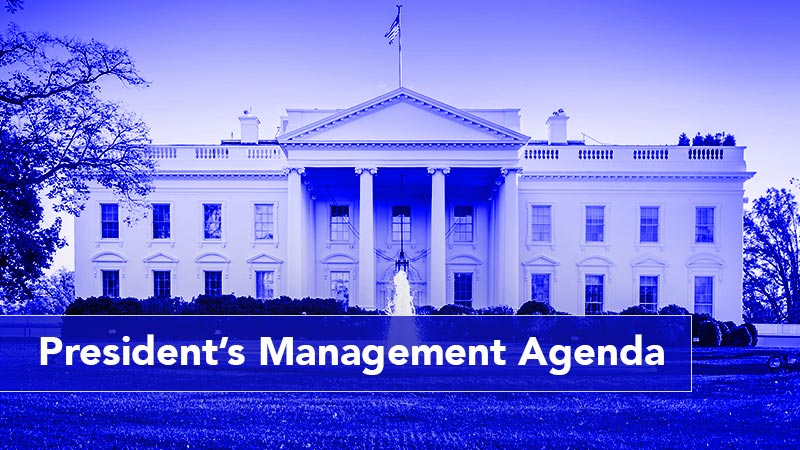
The Biden-Harris administration released a vision statement for the President’s Management Agenda (PMA) in November, and has since released a draft learning agenda that will inform further development of the PMA. But what’s next for the PMA and when can agencies expect implementation efforts to begin?
Leaders from the Office of Management and Budget (OMB) and General Services Administration (GSA) today offered insight into what those next steps will look like during a conversation hosted by the National Academy of Public Administration’s Standing Panel on Executive Organization and Management.
Those next steps include building a team of dedicated staff for each PMA priority area, gathering input from the public and key stakeholders on the draft learning agenda, and publicly reporting on PMA progress going forward via the performance.gov website.
Building Priority Teams
“One of the things we’ve learned over time is if we are going to continue to learn from the lessons of the past PMAs to inform future efforts, we really need a team of dedicated people to make sure we’re understanding what has and hasn’t worked,” said Dustin Brown, deputy assistant director for management at OMB.
The teams will be focused around PMA’s three main priority areas: “strengthening and empowering the Federal workforce; delivering excellent, equitable, and secure Federal services and customer experience; and managing the business of Government to build back better.”
Lauren Stocker, associate director of the Office of Shared Solutions and Performance Improvement at GSA, said her team has been working with OMB to identify those priority area leaders who will “focus their time and efforts across the next few years on these priorities, and then start doing what we call action planning.”
The leaders will be in charge of developing roadmaps for the priorities, establishing clear and measurable goals, and identifying success metrics for teams to meet in order to reach their goals in four years, according to Stocker.
Although Stocker did not share when the priority leaders would be announced, she said performance.gov will be the place to check “soon [to] see the priority area leaders and what success looks like for each of those priorities.”
“Now that the vision’s out, we’re really working on the specific kind of action plans that will be released in early 2022, probably in the springtime, with the types of goal teams, and measures and milestones that we traditionally include in action plans, and we’ll be continuing to leverage performance.gov to regularly update folks on progress,” Brown added.
Gathering Input
As for gathering input from the public and key stakeholders, there is currently a survey on performance.gov that will remain open until Monday for the public to submit their comments on the draft learning agenda.
Those responses will help inform the final version of the learning agenda, which should be published in “the coming months,” according to Nichelle Johnson Billips, a White House Leadership Development Program fellow at OMB.
“The idea is that we will go through those questions over the coming weeks after the survey closes, and then we’ll need to finalize the learning agenda before it can be published in the coming months,” Billips said. “We’re just going to have a few people going through those responses and then we’ll see if there’s input that we need from others within the building or across other parts of the center of government before we can finalize and get it posted.”
Billips also noted that the draft learning agenda effort is “complementary to the agency learning agendas,” which will also be released in the spring and published on both agency websites and the new evaluation.gov website. Billips said OMB is “looking to make sure that there’s some coordination and truly lift up the efforts around evidence building that had happened thus far.”
In addition to providing input on the draft learning agenda, Stocker told the public to “stay tuned” for the chance to engage in the priority areas with the priority area leaders.
Public Reporting
The newly redesigned performance.gov will be the home for most of the public PMA reporting efforts, according to Stocker.
Once the priority area team leaders are announced, Stocker said the public can expect to see “progress reports in those priority areas” on performance.gov.
“We’ll be telling those stories, at least quarterly as you’re used to seeing, but I will say that our blog and our redesign of performance.gov is really intended to bring to life a lot of the things that these teams are going to be doing,” Stocker said.
“My team is going to start focusing on, not only helping teams with implementation, but assessing progress and raising issues as those issues come up, and then thinking about how to tell the story of our progress on performance.gov,” Stocker added.
